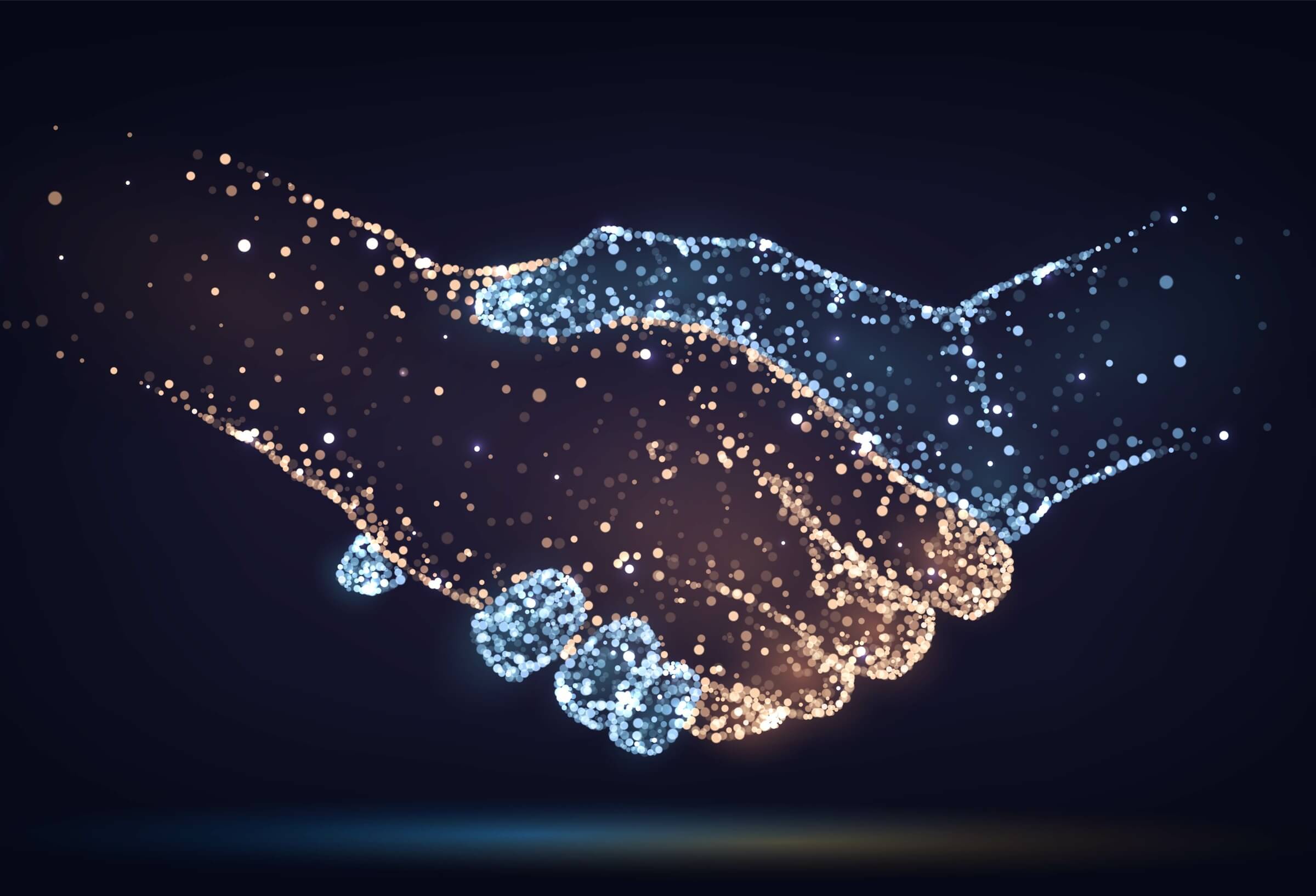Proven strategies for building trust are at your fingertips—even when your team members aren’t.

In the Iraq Museum in Baghdad, there stands a throne base that dates from the 9th century BCE. It is made of carved limestone and depicts a meeting between two kings, one Assyrian and the other Babylonian. To a modern observer, they appear strange, with their floor-length robes and squared-off beards. But one thing about the image is strikingly familiar: The two men are shaking hands.

This image, one of the oldest known depictions of a handshake, testifies to the practice’s long history. Anthropologists believe that the act of pressing their hands together originally offered two adversaries (and potential allies) a way to prove to one another they weren’t holding weapons. Out of their mutual vulnerability, mutual trust could arise. Over time, the handshake became a general signal. It signified good intentions, and it became a way to seal a treaty or mark the end of a conflict.
Handshakes in the Lab
Only recently, though, have researchers been able to measure the effects of a handshake. It turns out that this practice from antiquity still holds surprising power.
In 2014, a group of researchers from UC Berkeley, the University of Chicago, and Harvard coached study participants to either shake hands or not shake hands before beginning a negotiation. They found that when participants shook hands, the negotiations went more smoothly. For one, the two partners shared more information with one another, and this helped them arrive at better—more mutually beneficial—outcomes. They even found that handshakes promoted ethical behavior. Because the two participants trusted one another, they were less likely to lie in order to get their way during the negotiation.
The researchers concluded that the handshake brought these benefits to the negotiation for a simple reason. It served as a signal to both participants that each of them wanted to cooperate and not just compete. The researchers point out that “Children in conflict are often told by parents to ‘shake hands and make up.’” They find that the same principle applies to adults, too. A handshake can turn two (potential) adversaries into allies.
Researchers have found that several other practices are like the handshake: Although they might seem like empty rituals, they are actually powerful trust-building techniques. Ice breakers, like singing in a group, can help bonds to form quickly. And the same is true of sharing a meal and even simply moving in unison. In many of these cases, physical closeness is the key to forming close relationships. (Two separate studies recently found that eating from a shared plate is an especially effective way to promote more cooperative negotiations!)
High-Tech…Low-Trust?
If the basic rule of trust-building is “the closer, the better,” it could spell trouble for the post-COVID workplace. Social distancing requirements forced many teams into online and remote working situations. At least some of the changes brought about by the pandemic are likely to stick. Working from home has proved to be so agreeable that, according to one survey, 30% of employees would quit if forced back into the office full time. And some public health officials have argued that some of our pre-pandemic habits are better off broken. As Dr. Anthony Fauci recently put it, “I don’t think we should shake hands ever again.”
Video conferencing technologies like Zoom can help by increasing participation. But they can also create a conundrum for leaders by decreasing the value of participation and making it more difficult to build trust. We need to be even more intentional about harnessing the trust-building opportunities we have when they arise.
Put it in Practice
Fortunately, research has uncovered many trust-building strategies that don’t rely on physical proximity.
Be Vulnerable. A recent study suggests that embarrassing stories are a bit like the verbal equivalent of a handshake. Researchers invited leaders to share either an embarrassing story or a story about a proud moment. Then their teams engaged in a design thinking exercise. The teams whose leaders shared embarrassing stories were more creative. (They generated a greater range as well as a greater total number of ideas.) One explanation is that the embarrassing stories helped “create more group cohesion and trust.”
Practice Generosity. While cooperation is often mutually beneficial, we shouldn't approach it as a simple quid pro quo. If we do, we undermine our trustworthiness. Psychologist Jillian Jordan and her colleagues recently found that "uncalculating cooperation" is one of our most powerful (and most accurate) signals of trustworthiness.
Résumés provide a powerful example. Matthias Heinz and Heiner Schumacher find that employers tend to scour potential employees' résumés looking for volunteering and other activities that the employee engages in without calculating the costs and benefits to himself or herself. Moreover, employers are right to do so. Individuals whose résumés show these activities turn out to be great team players and highly rated employees. The message is clear: Generosity pays, particularly at the beginning of an interaction.
Acknowledge Emotions. While leaders may be tempted to ignore or downplay team members’ negative emotions and focus on “good vibes” instead, when they do so, they miss out on an opportunity to build trust. A recent study found that by simply acknowledging another person’s feelings (“You seem upset”) we lead them to trust us more.
The study also revealed that for the process to work, leaders don’t have to be expert mind-readers. Even when they mis-label an emotion, they still build trust because the act of giving time, energy, and attention is what really matters most to employees.
Rediscover Rituals. While new technologies threaten rituals, they can also provide the impetus to rediscover and reinvent them. Stanford Design School lecturer Kursat Ozenc recommends adding check-ins, structured reflections, props, and social hours to your virtual meetings. Doing so can enable team members to share more, learn more, and connect more deeply.
If the kind of practices Ozenc suggests sound inefficient, it’s important to recognize that they pay off over the long term. Recent research from Tami Kim (UVA) reveals that workplace rituals have the power to make work more meaningful, which, Kim finds, boosts ethical behavior in the workplace at the same time.



